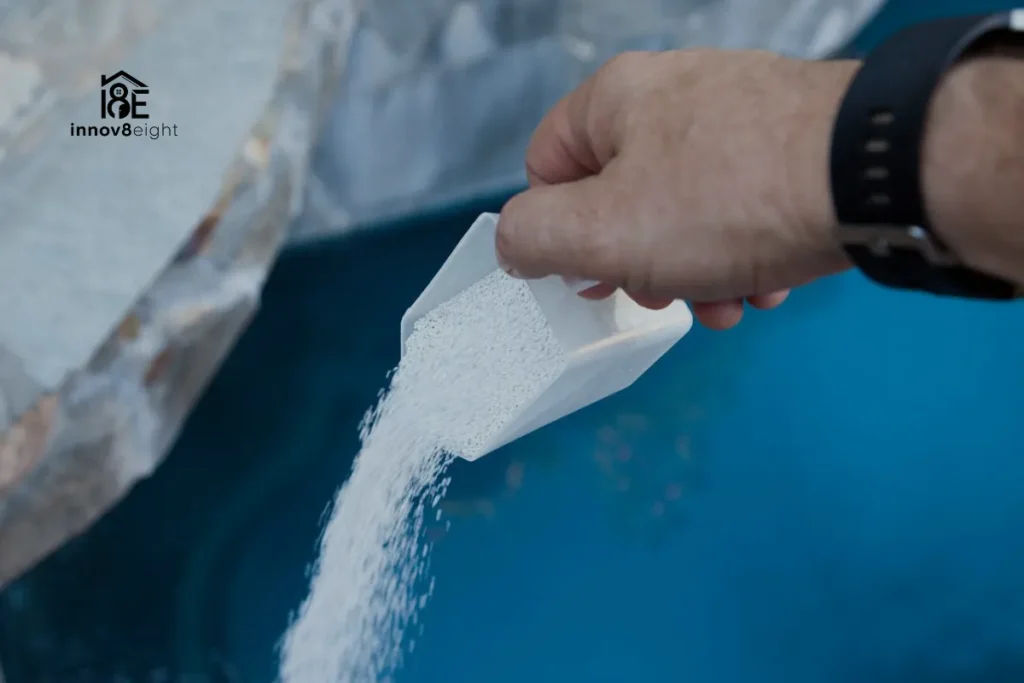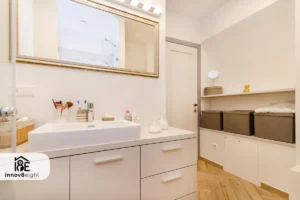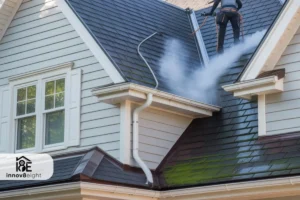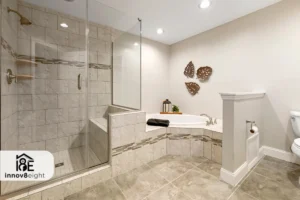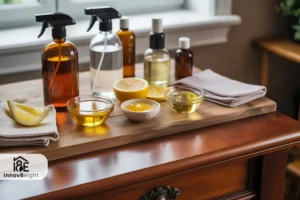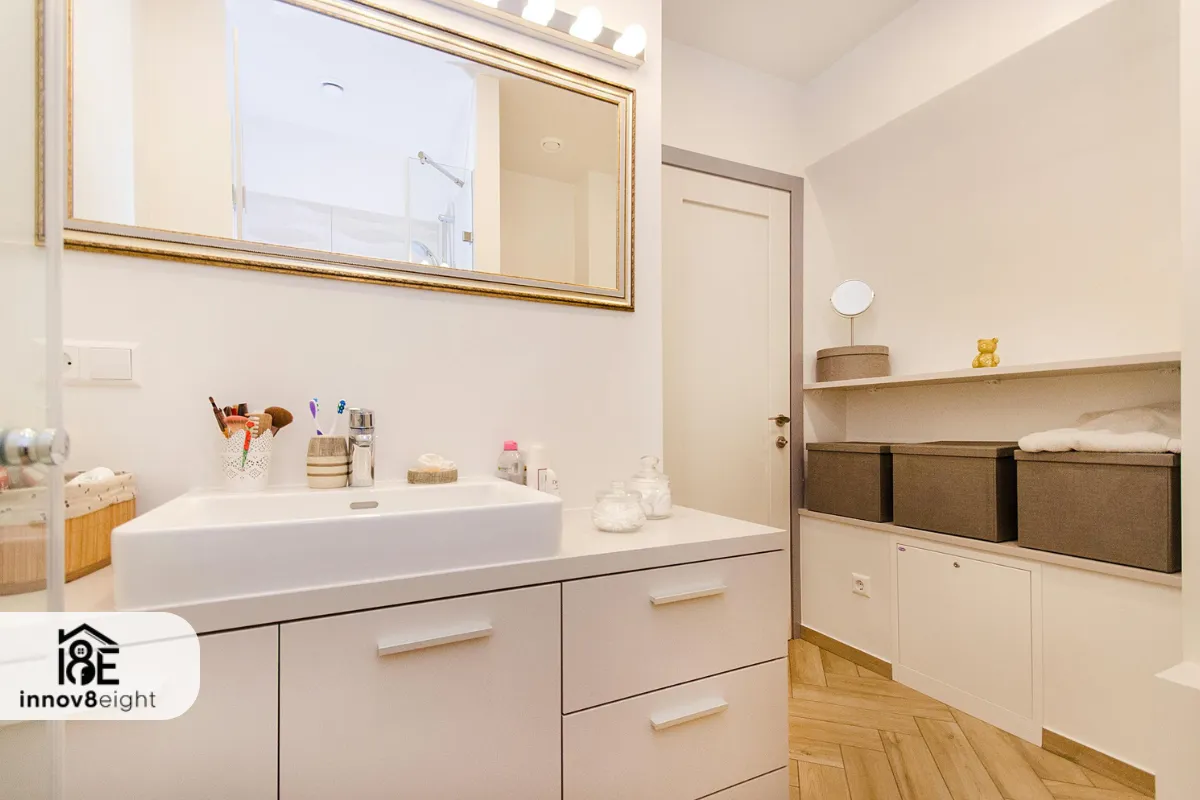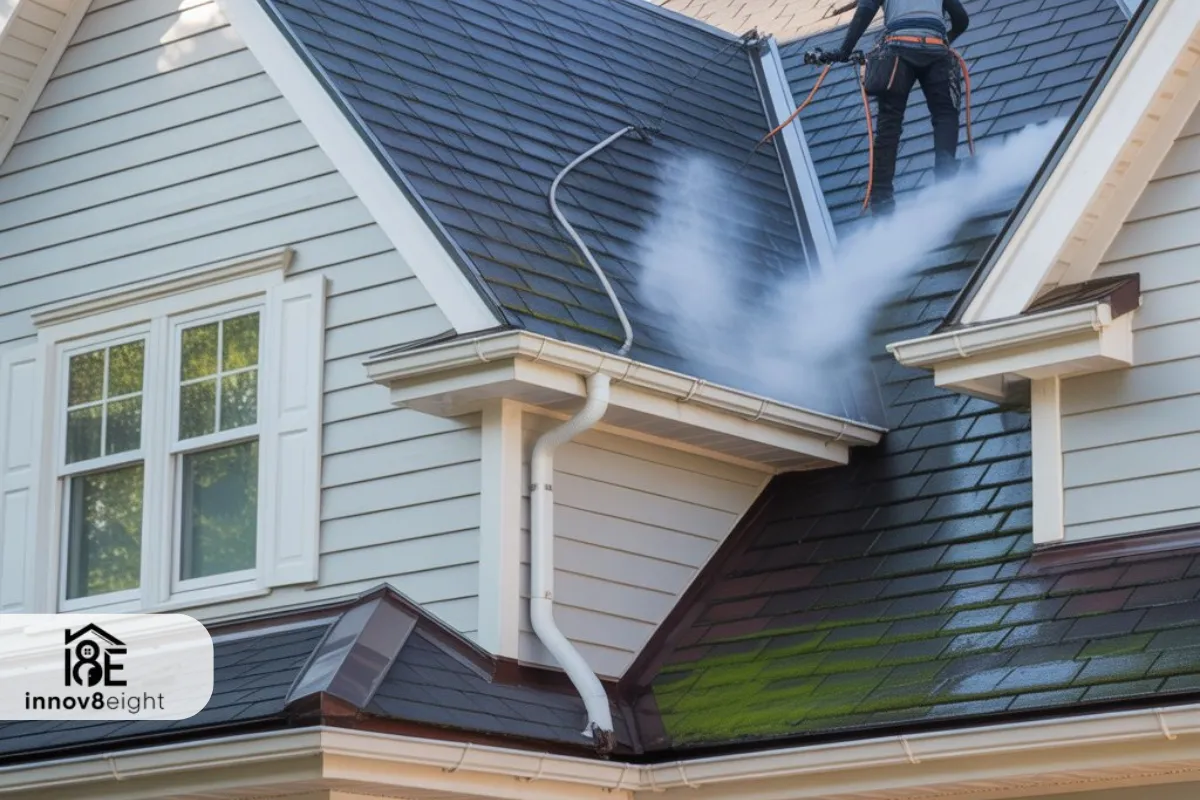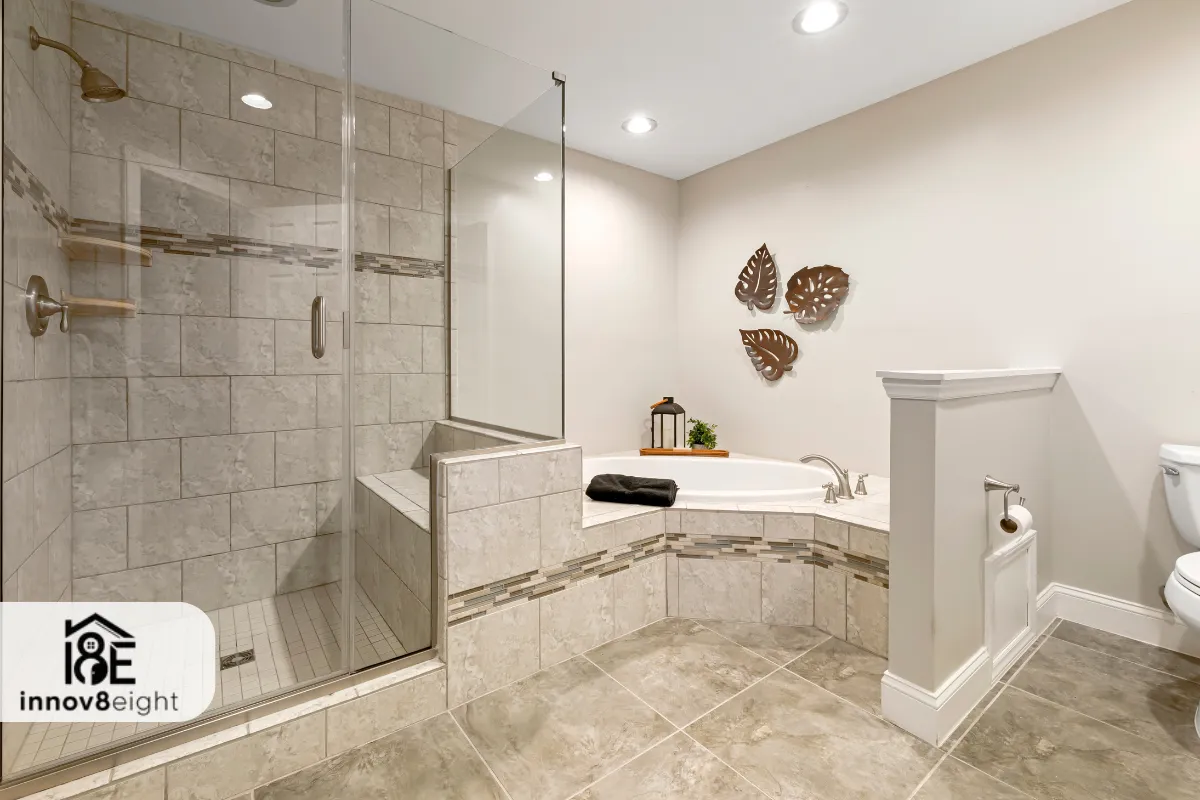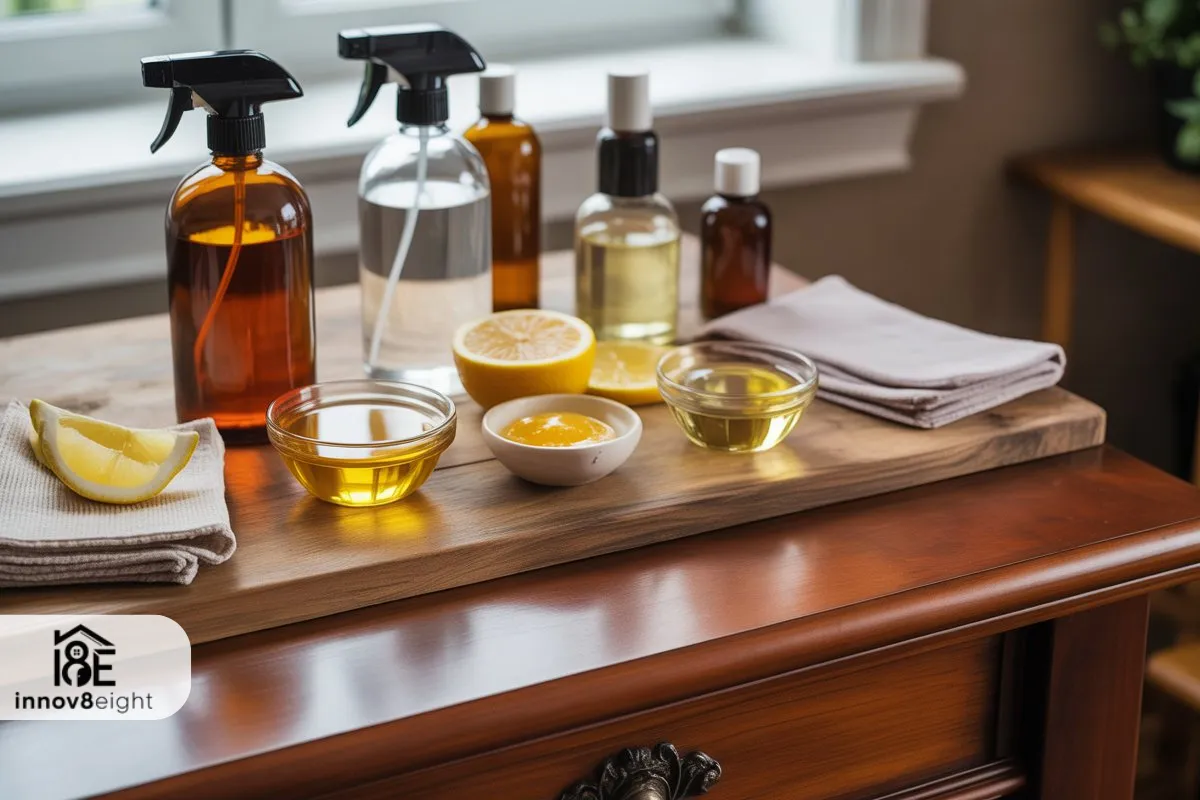Why Knowing What Is Pool Stabilizer Matters
Why Your Chlorine Disappears & How Stabilizer Helps
Hey there, pool owner! Have you ever stared at your sparkling blue pool & wondered, “Why does my chlorine disappear so fast?” Or maybe you’ve added chlorine just to see it vanish after a sunny afternoon. If that sounds familiar, it’s time to talk about what is pool stabilizer & why it’s your pool’s secret superhero.
What Exactly Is Pool Stabilizer?
Simply put, pool stabilizer is a special chemical, also called cyanuric acid (CYA), that protects your chlorine from the sun’s powerful UV rays. Think of it like sunscreen, but for your pool. Without it, your chlorine can break down super quickly, leaving your water unprotected & making you spend more money topping it up. Nobody wants that, right?
Do You Really Need It?
Now, you might be wondering, “Do I really need it?” The answer is almost always yes for outdoor pools. Pools exposed to sunlight lose chlorine fast, sometimes up to 50% in a single day! Adding the right amount of pool stabilizer slows this process, so your chlorine sticks around longer & keeps your water safe, clear, & algae-free. It’s a small step that makes a huge difference in keeping your pool ready for fun.
How Stabilizer Keeps Your Pool Balanced & Healthy
Here’s another cool thing: pool stabilizer doesn’t just protect chlorine, it helps your pool stay balanced. When your chlorine levels last longer, it prevents algae growth, reduces cloudy water, & saves you the headache of constant testing & adjusting. Imagine enjoying a refreshing swim without worrying if your water is safe, that’s the magic of stabilizer.
Use It Wisely to Avoid Problems
But, a little goes a long way. Too much pool stabilizer can actually slow chlorine too much, causing a problem called “chlorine lock.” Don’t worry, we’ll get into the exact numbers, how much to add, & when in the next sections. For now, just know that understanding what is pool stabilizer is the first step to owning a pool that’s always ready for action.
What Is Pool Stabilizer / Cyanuric Acid?
The Basics of Pool Stabilizer
So, what exactly is pool stabilizer? In simple terms, it’s a chemical called cyanuric acid (CYA) that keeps your chlorine safe from the sun. Think of it as a shield that slows down the rate at which sunlight destroys your chlorine. Without it, your pool’s chlorine could vanish in just a few hours, leaving your water unprotected and opening the door to algae, bacteria, and cloudy water.
Why It’s Called the Pool’s Sunscreen
Imagine going outside without sunscreen on a blazing sunny day, you’d get burned fast, right? Your pool experiences the same thing. UV rays attack chlorine, breaking it down quickly. By adding pool stabilizer, you’re basically giving your pool its own sunscreen. This helps maintain steady chlorine levels so your water stays clean, safe, and ready for fun swimming sessions.
How Pool Stabilizer Works
Here’s the magic in a nutshell: when you add pool stabilizer, it binds with chlorine in the water. This slows down chlorine’s breakdown from sunlight but still allows it to kill bacteria and keep your pool sparkling. Essentially, stabilizer acts like a traffic cop, controlling how fast chlorine is used up, so you don’t have to constantly add more.
Different Names & Forms You Should Know
Sometimes, you’ll see pool stabilizer called chlorine stabilizer or pool conditioner. They’re all the same thing. You can buy it in several forms:
- Granular – quick to dissolve & easy to measure
- Liquid – simple to pour directly into the pool
- Stabilized chlorine tablets – contain built-in stabilizer for extra convenience
Each form works, but the key is to measure carefully. Too little, and your chlorine still disappears too quickly. Too much, and you risk “chlorine lock,” where your water has chlorine but it can’t work properly.
Why Understanding It Matters
Knowing what is pool stabilizer isn’t just about chemistry, it’s about keeping your pool safe, clear, and fun. When used correctly, it reduces chlorine waste, saves money & prevents headaches like algae outbreaks or cloudy water. Think of it as a small step that makes a huge difference in your pool’s health & your peace of mind.
Why Pool Stabilizer Matters
Protects Your Chlorine & Keeps It Strong
You’ve added chlorine to your pool, but have you noticed it disappearing fast? That’s where pool stabilizer comes to the rescue. By acting like sunscreen for your chlorine, it slows down the effects of sunlight. This means your chlorine stays active longer, killing bacteria, preventing algae, & keeping your water crystal clear. Without it, you could lose up to 50% of your chlorine in a single sunny day.
Saves You Money & Time
Imagine constantly adding chlorine every few hours just to keep your pool safe. Exhausting, right? Using pool stabilizer ensures your chlorine lasts longer, so you spend less money topping it up. Plus, it saves you time testing & adjusting chemicals. It’s a simple step that makes pool maintenance much easier & stress-free.
Keeps Your Pool Safe & Healthy
Chlorine isn’t just about sparkling water, it’s about safety. Without enough chlorine, algae and bacteria can grow quickly, making your pool unsafe to swim in. Pool stabilizer helps maintain steady chlorine levels, keeping your water safe for your family & friends. It’s like having a reliable guardian watching over your pool 24/7.
Prevents Common Pool Problems
Too little pool stabilizer can leave your chlorine exposed, but too much can create a problem called “chlorine lock.” This happens when chlorine is present but can’t do its job effectively. Understanding how much pool stabilizer to use is key to avoiding cloudy water, algae outbreaks, or ineffective sanitation.
Helps Your Pool Stay Balanced & Fun
When your chlorine is protected, your pool stays balanced & enjoyable. Swims are more refreshing, the water looks inviting, and you don’t have to stress about constant chemical adjustments. In short, pool stabilizer keeps your pool healthy, your maintenance routine simple, & your summer days full of fun.
Understanding Stabilizer Levels (US Focus)
Why Stabilizer Levels Matter
Knowing what is pool stabilizer is just the start. The next step is understanding how much to use. Too little, and your chlorine won’t last; too much, and you risk “chlorine lock,” where chlorine is present but can’t do its job. Maintaining the right stabilizer levels keeps your pool safe, clean, & enjoyable.
Ideal Levels for US Pools
In the United States, experts recommend keeping your pool stabilizer, or cyanuric acid (CYA), in the following ranges:
| Pool Type | Recommended CYA (ppm) |
|---|---|
| Outdoor residential pools | 30–50 ppm |
| Saltwater pools | 40–60 ppm |
| Hot tubs / spas | 30–50 ppm |
| Indoor pools | 0–30 ppm (optional, sunlight not a factor) |
These ranges ensure your chlorine works efficiently while avoiding overstabilization.
How Much Stabilizer to Add
Here’s a simple guide for adding pool stabilizer in the USA:
- Granular stabilizer: Dissolve in a bucket before adding to the pool.
- Liquid stabilizer: Pour directly into the pool with proper circulation.
- Stabilized chlorine tablets: Already contain CYA, so adjust based on your existing levels.
Quick rule of thumb: To raise CYA by 10 ppm in 10,000 gallons of water, add roughly 1 pound of granular stabilizer. Always retest after 24 hours before adding more.
Testing & Monitoring
Regular testing is key. Use a test kit designed for CYA or take a water sample to your local pool store. Test:
- At the start of the season
- After heavy rainfall or top-ups
- Every 4–6 weeks during the swimming season
This keeps your chlorine stable & prevents problems before they start.
Seasonal Adjustments & Tips
- Summer / sunny states (Florida, Arizona): You may need slightly higher stabilizer due to intense sunlight.
- Rainy or northern climates: Test after heavy rain; water replacement can lower stabilizer levels.
- Saltwater pools: Monitor closely; saltwater can affect chlorine stability.
By understanding pool stabilizer levels & keeping them in the right range, you’ll save money, enjoy clearer water, & avoid frustrating problems like algae or ineffective chlorine.
Types & Forms of Pool Stabilizer
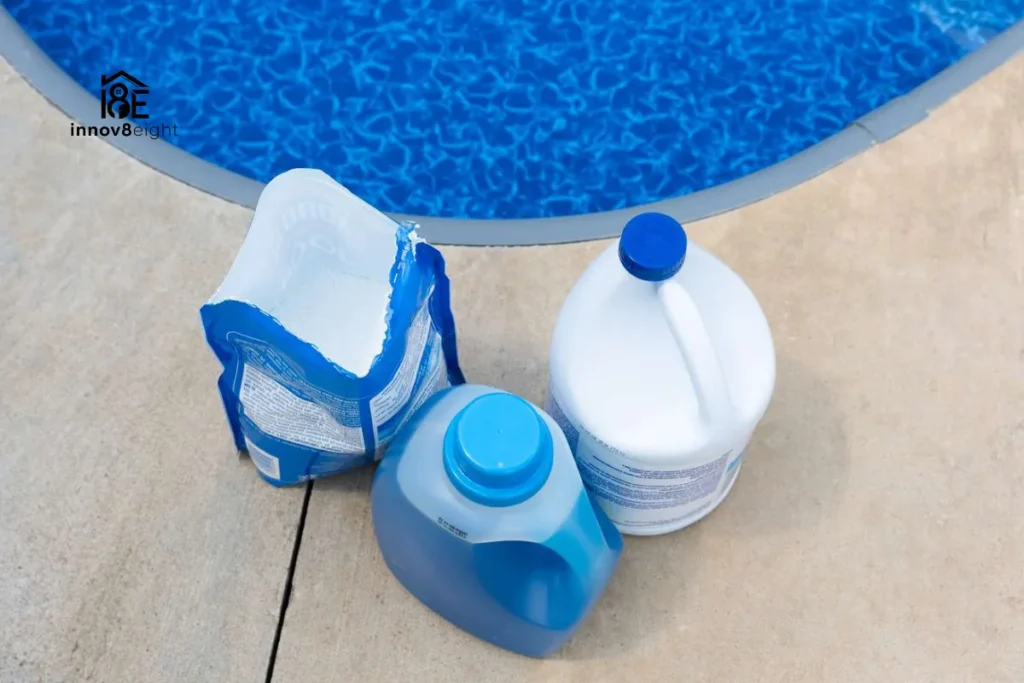
Different Forms of Pool Stabilizer & How They Work
When it comes to pool stabilizer, you have a few options. Each form works to protect your chlorine, but they differ in how you use them. Understanding the types ensures you get the most out of your stabilizer and avoid over- or under-dosing.
- Granular Stabilizer
- Quick to dissolve & easy to measure.
- Best for adding a specific amount to raise CYA levels precisely.
- Typically dissolved in a bucket of water before adding to the pool.
- Liquid Stabilizer
- Simple to pour directly into the pool.
- Great for top-ups or small adjustments.
- Circulate the water for even distribution.
- Stabilized Chlorine Tablets
- Contains built-in pool stabilizer (CYA) along with chlorine.
- Convenient for ongoing maintenance.
- Ideal for outdoor pools where regular chlorine dosing is needed.
Choosing the Right Form for Your Pool
- Outdoor pools: Granular or stabilized tablets work best to protect chlorine from sunlight.
- Saltwater pools: Liquid stabilizer is easier to adjust without affecting salt levels.
- Hot tubs & spas: Use granular or liquid in small, measured doses. Avoid tablets that may over-stabilize.
Pros & Cons of Each Type
| Type | Pros | Cons |
|---|---|---|
| Granular | Precise control, quick to dissolve | Requires measurement & mixing |
| Liquid | Easy to apply, convenient | Less precise for large adjustments |
| Stabilized Tablets | Convenient, continuous dosing | Harder to control exact CYA increase |
Tips for Safe & Effective Use
- Always test your pool before adding stabilizer.
- Avoid adding too much at once; it’s easier to add more than to lower levels.
- Use in combination with chlorine testing to prevent chlorine lock.
- Store stabilizer in a cool, dry place away from sunlight.
By choosing the right form of pool stabilizer & using it correctly, you’ll maintain balanced chlorine levels, prevent algae growth, & enjoy crystal-clear water all season long.
How to Add Pool Stabilizer
Step 1: Test Your Pool First
Before adding any pool stabilizer, it’s crucial to know your current levels. Use a CYA test kit or bring a water sample to your local pool store. Testing ensures you add the right amount, too little won’t protect your chlorine, too much can cause chlorine lock.
Step 2: Choose the Right Form
Depending on your pool and preference, you can use:
- Granular stabilizer: Dissolve in a bucket before adding. Best for precise adjustments.
- Liquid stabilizer: Pour directly into the pool. Easy for small top-ups.
- Stabilized chlorine tablets: Slowly release CYA over time while adding chlorine.
Step 3: Calculate How Much to Add
Here’s a simple guide for US pools:
- To raise CYA by 10 ppm in 10,000 gallons, add about 1 pound of granular stabilizer.
- For liquid stabilizer, follow the manufacturer’s instructions for the same volume.
- Always re-test after 24 hours to confirm the new level.
This ensures your pool stays within the ideal stabilizer range without risking over-stabilization.
Step 4: Add Stabilizer Properly
- Granular: Dissolve in water & pour around the pool slowly while the pump is running.
- Liquid: Pour evenly around the pool with circulation on.
- Tablets: Place in a floating dispenser or skimmer. Avoid adding directly to the pool floor to prevent staining.
Step 5: Let It Circulate & Retest
After adding stabilizer, allow the water to circulate for 6–12 hours before testing again. This ensures even distribution and accurate readings.
Tips & Safety Notes
- Add stabilizer gradually; it’s easier to add more than to remove excess.
- Avoid swimming immediately after adding stabilizer, especially concentrated liquid or granular forms.
- Store all pool chemicals safely in a cool, dry area away from kids & pets.
By following these steps, your pool will maintain steady chlorine levels, stay safe & algae-free, and make summer swimming stress-free. Properly adding pool stabilizer is one of the simplest ways to protect your pool & your wallet!
Common Problems & Troubleshooting
Overstabilization & Chlorine Lock
One of the most common problems pool owners face is too much pool stabilizer. This can cause chlorine lock, a situation where chlorine is present in your water but can’t effectively kill bacteria or prevent algae. Symptoms include cloudy water, algae growth, or a strong chemical smell.
How to fix it:
- Partially drain and refill your pool with fresh water to dilute CYA.
- Use reverse osmosis (RO) treatment if available for large pools.
- Avoid adding more stabilizer until levels are back in the recommended US range.
Low Stabilizer Levels
On the flip side, not having enough pool stabilizer leaves your chlorine exposed to sunlight, causing rapid depletion. This can result in unsafe swimming conditions and higher maintenance costs.
Solution:
- Test your pool regularly with a CYA test kit.
- Add the right amount of stabilizer according to pool volume & desired CYA levels.
- Re-test after 24 hours to ensure proper distribution.
Algae Growth & Cloudy Water
Algae growth often occurs when chlorine levels drop due to insufficient stabilizer. Cloudy water may also indicate imbalance caused by unstable chlorine.
Solution:
- Shock the pool with chlorine to remove algae.
- Adjust pool stabilizer to maintain ideal levels.
- Maintain regular testing & circulation to prevent recurrence.
Weather & Environmental Factors
Heavy rain, evaporation, or large top-offs can change stabilizer levels in your pool. US pools in sunny states may require slightly higher CYA levels, while pools in rainy regions may need top-ups after dilution.
Tip:
- Check stabilizer levels after extreme weather or large water additions.
- Adjust carefully using granular or liquid stabilizer.
Preventing Problems Before They Start
- Stick to recommended stabilizer levels for your pool type (see Section 4).
- Test at least every 4–6 weeks during swimming season.
- Avoid sudden large additions of stabilizer; gradual dosing is safer.
By understanding these common problems & troubleshooting them properly, your pool will stay clear, safe, & ready for swimming all season. Pool stabilizer is your best tool for preventing headaches before they happen.
Maintenance & Best Practices
Test Your Pool Regularly & Keep Track
Regular testing is the key to a healthy pool. Use a CYA test kit or take a water sample to your local pool store. Aim to test:
- At the start of the swimming season
- After heavy rain or water top-ups
- Every 4–6 weeks during summer
Keeping track of pool stabilizer levels ensures your chlorine stays effective, prevents algae growth, & avoids the dreaded chlorine lock.
Follow a Seasonal Schedule
Maintaining proper pool stabilizer levels requires a seasonal approach:
- Spring / Start of Season: Test & adjust CYA levels to the ideal range for your pool type.
- Summer / Peak Sunlight: Retest every 4–6 weeks; add stabilizer if levels drop due to UV exposure.
- Fall / End of Season: Check levels before closing the pool; make minor adjustments to protect chlorine over winter if needed.
Combine Stabilizer With Proper Chlorine Maintenance
- Always monitor chlorine levels alongside stabilizer.
- Avoid using excessive stabilized chlorine if CYA is already high.
- Shock your pool occasionally to remove contaminants without over-stabilizing.
Tips for US Pool Owners
- Outdoor pools in sunny states like Florida or Arizona may need slightly higher stabilizer levels to protect chlorine.
- Pools in rainy climates may require adjustments after dilution from heavy rain.
- Saltwater pools should monitor stabilizer carefully, as salt systems can affect chlorine efficiency.
Storage & Safety Practices
- Store pool stabilizer in a cool, dry area, away from sunlight.
- Keep chemicals out of reach of children & pets.
- Never mix stabilizer with other chemicals directly; add it to the pool following proper guidelines.
By following these maintenance & best practices, you’ll enjoy crystal-clear water, safer swimming, & less time worrying about your pool. Pool stabilizer keeps your chlorine strong, water balanced, & your summer stress-free.
Advanced Tips & Little-Known Facts
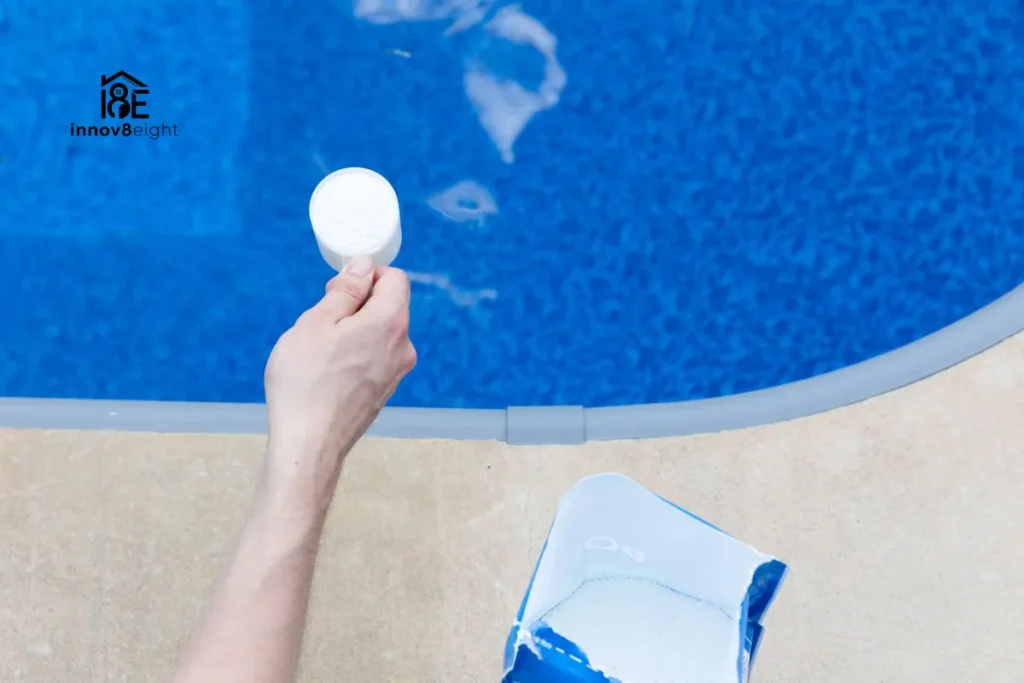
Rain, Evaporation & Water Replacement Can Affect Stabilizer
Did you know that weather can change your pool stabilizer levels? Heavy rain, splash-out, or evaporation can dilute CYA in your pool, especially in US climates with frequent storms or extreme sun. After large water changes, always retest & adjust stabilizer levels to maintain steady chlorine protection.
Mixing Stabilized & Unstabilized Chlorine
Many pool owners wonder if they can mix stabilized chlorine tablets with regular chlorine. The answer is yes, but carefully. Adding too much stabilized chlorine when your CYA is already high can cause chlorine lock. Keep testing & maintain the right balance for effective sanitation.
Choosing the Best US Pool Stabilizer Brands
Some brands are more effective or easier to use than others. Look for:
- Trusted US brands with clear instructions
- Products that list cyanuric acid (CYA) content
- Granular, liquid, or tablet options depending on your pool setup
Stabilizer & Saltwater Pools
Saltwater pools produce chlorine through a salt system, but sunlight can still degrade it. Adding the right amount of pool stabilizer ensures chlorine lasts longer & prevents algae growth. Always test after adding stabilizer, as saltwater chemistry can differ from traditional pools.
Avoid Common Misconceptions
- Myth: Baking soda can stabilize chlorine. ❌ Wrong! Baking soda only affects alkalinity, not CYA.
- Myth: More stabilizer is always better. ❌ Too much can cause chlorine lock.
- Fact: Regular testing & gradual additions are the safest way to protect chlorine and maintain a clean, clear pool.
Use a Dosage Calculator or Table for Accuracy
For precise results, use a pool stabilizer calculator or reference a dosage table. This helps you avoid over-stabilizing & keeps your pool safe, balanced, and ready for swimming.
By applying these advanced tips & knowing little-known facts about pool stabilizer, you can keep your pool in top condition, save money, & enjoy peace of mind all season.
Final Thought
Pool stabilizer protects your chlorine, keeps water clear, and prevents algae growth. By testing regularly, adding the right amount, & maintaining proper levels, you’ll enjoy a safe, sparkling pool with less effort and stress.
FAQs
How Much Pool Stabilizer Should I Add?
The amount depends on your pool size and current stabilizer levels. For example, to raise cyanuric acid (CYA) by 10 ppm in 10,000 gallons of water, add about 1 pound of granular stabilizer. Always dissolve granules before adding & retest after 24 hours.
Can I Mix Stabilized & Unstabilized Chlorine?
Yes, but carefully. Using too much stabilized chlorine when your stabilizer is already high can cause chlorine lock, where chlorine is present but ineffective. Test levels regularly & adjust gradually.
Do Indoor Pools Need Pool Stabilizer?
Indoor pools typically receive little sunlight, so stabilizer is optional. Using it in small amounts is safe but not necessary for maintaining chlorine levels.
How Do I Lower High Stabilizer Levels?
Too much stabilizer can reduce chlorine effectiveness. Solutions include:
- Partially draining & refilling the pool with fresh water
- Avoid adding more stabilizer until levels are in the recommended range
Can Stabilizer Protect Saltwater Pools?
Yes! Saltwater pools still need stabilizer because chlorine produced by salt systems can degrade in sunlight. Adjust carefully and always test after adding.
Does Stabilizer Evaporate or Break Down?
No, stabilizer is a stable chemical and does not evaporate. Its levels change mainly through dilution, water replacement, or splash-out.
Are There Any Common Misconceptions?
- Baking soda cannot stabilize chlorine, it only affects alkalinity.
- More stabilizer isn’t always better; excessive amounts can lead to chlorine lock.
- Gradual testing & adjustments keep your pool balanced, clear, and safe.

